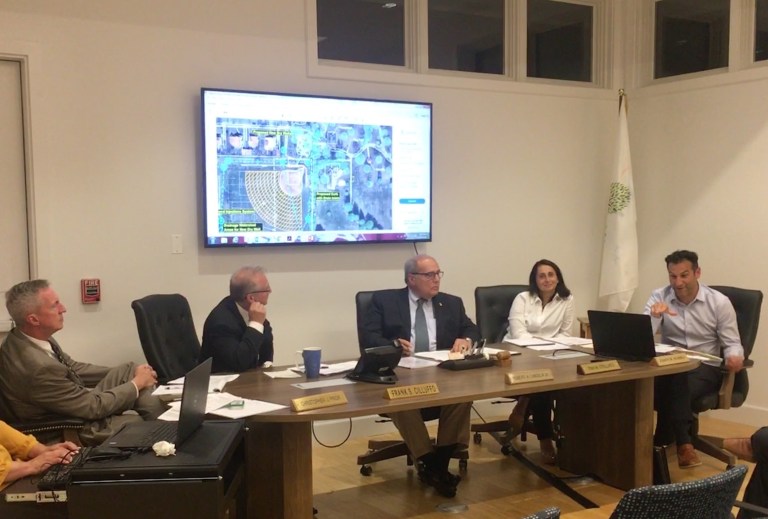
“It started with the fence at the duck pond,” said Jason R. Marra, superintendent of the Great Neck Park District, who is now planning a “full beautification of Allenwood Park” that will include work at the duck pond, a new drainage system, renovated walkways and redesigning the playground.
“What was the duck pond project ended up becoming the Allenwood Park project,” said Eileen Walk, a Great Neck resident who advocated for the renovation of the 13-acre park and has been working closely with Marra and his staff.
“There was an old fence that was six feet high and was really blocking the view of the beautiful pond we have,” said Marra.
“We ended up taking the fence down and started putting a plan together to beautify the pond, both for the Allenwood Association residents and the entire Great Neck community,” said Marra.
The fence was replaced with a split rail fence, which provides visibility between its rails, allowing for viewing at a lower height.
“We knew there were concerns of erosion,” said Marra, “so we also put jute mesh and planted grass around the pond to help.”
To solve issues of algae growth in the pond, park Supervisor Will McGirr implemented an organic method that entails depositing wood ash into the pond.
“It is a very small amount that is harmless to the birds and the fish, and it is working,” said McGirr. “Within 12 hours the algae is gone.”
“Our biggest issue, which is leading into another project that we are doing there, was the drainage,” said Marra. “All the runoff from the ball field, all the water, clay, dirt; everything runs into the pond.”
“We decided we can’t really go further with anything else until we solve this problem,” said Marra.
The park district board approved a site survey on the athletic portion of the park and hired RDA landscapers and architects to take ground samples and provide recommendations to solve the drainage issue.
They found that along with the issue of drainage into the pond, there was an issue with drainage at the athletic field.
The preferred plan for the field is an athletic drainage system, which involves making slits in the ground that are approximately two feet deep and injecting them with sand.
“It’s the same principle as a french drain system,” said McGirr. “Water will collect in the sand and the sand allows it to travel.”
“This sand injection system is going to solve the problem at the athletic field,” Marra said, “but we haven’t yet solved the issue of drainage going into the pond.”
Marra and his team, along with the consulting architects and landscapers, have been looking at options such as curbing and drain inlets near the pond and placing dry wells where the children’s playground is located.
The playground area was suggested because of the district’s plans to renovate, which allows for the flexibility to relocate the playground to accommodate underground dry wells if needed.
A grant has been given to the district to redesign the playground, along with funding allocated to renovate walkways.
“We didn’t want to just look at this as just replacing the existing playground, and we knew we had to redo the walkways, so we wanted to incorporate a design that encourages health and fitness and brings people together,” said Marra.
“We are trying to do something unique where we incorporate the playground into nature.”
Marra also mentioned the addition of adult fitness equipment so that “adults and children can spend the entire day in the park.”
A bid package for the drainage system is expected to be completed in the fall, with construction to take place during the fall and winter seasons. It is expected to be completed this year.
The renovation of the playground is expected to commence in the fall of 2019.
“Allenwood Park is beautiful as it is. We are just looking to enhance it,” said Marra.






